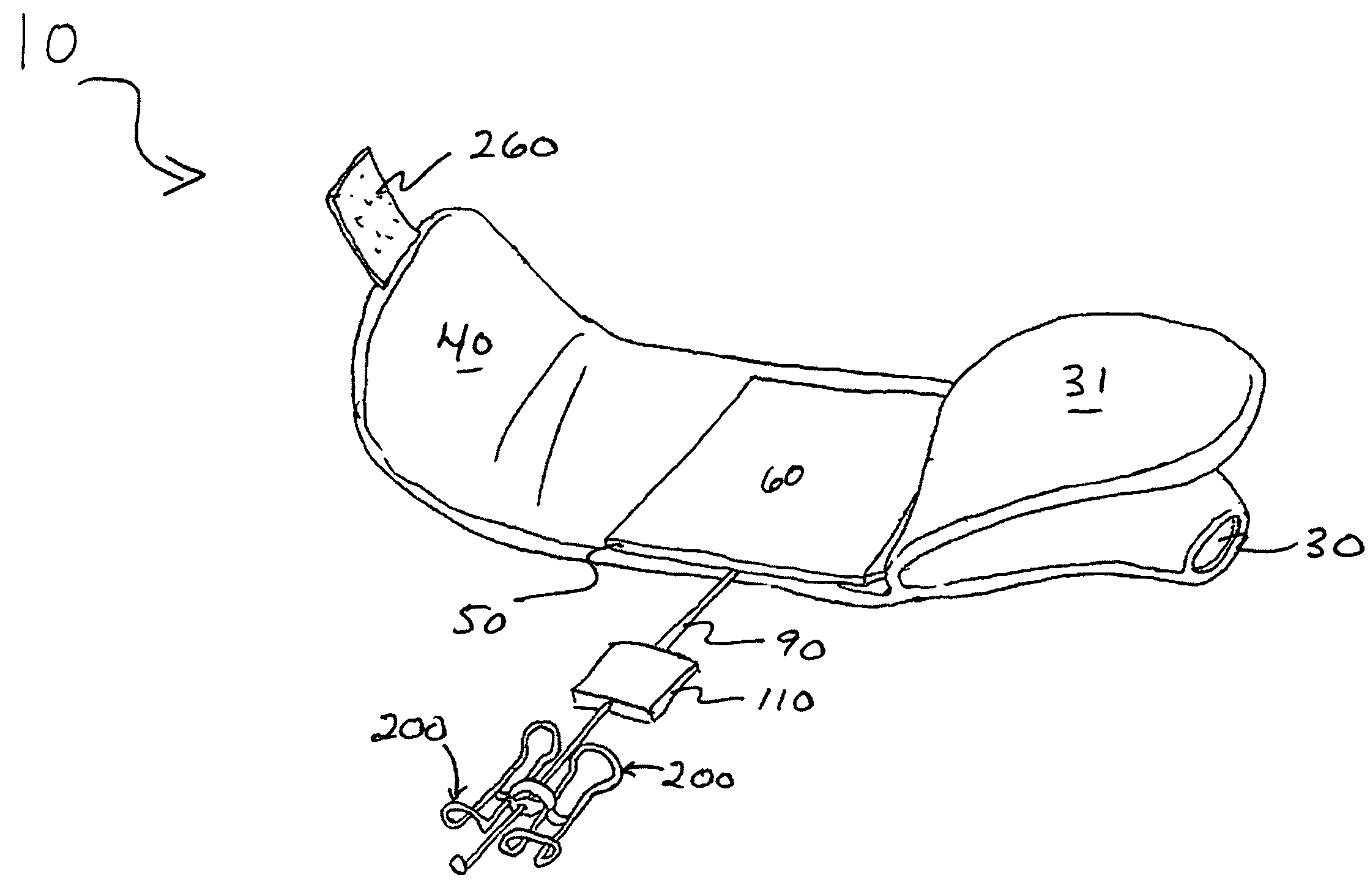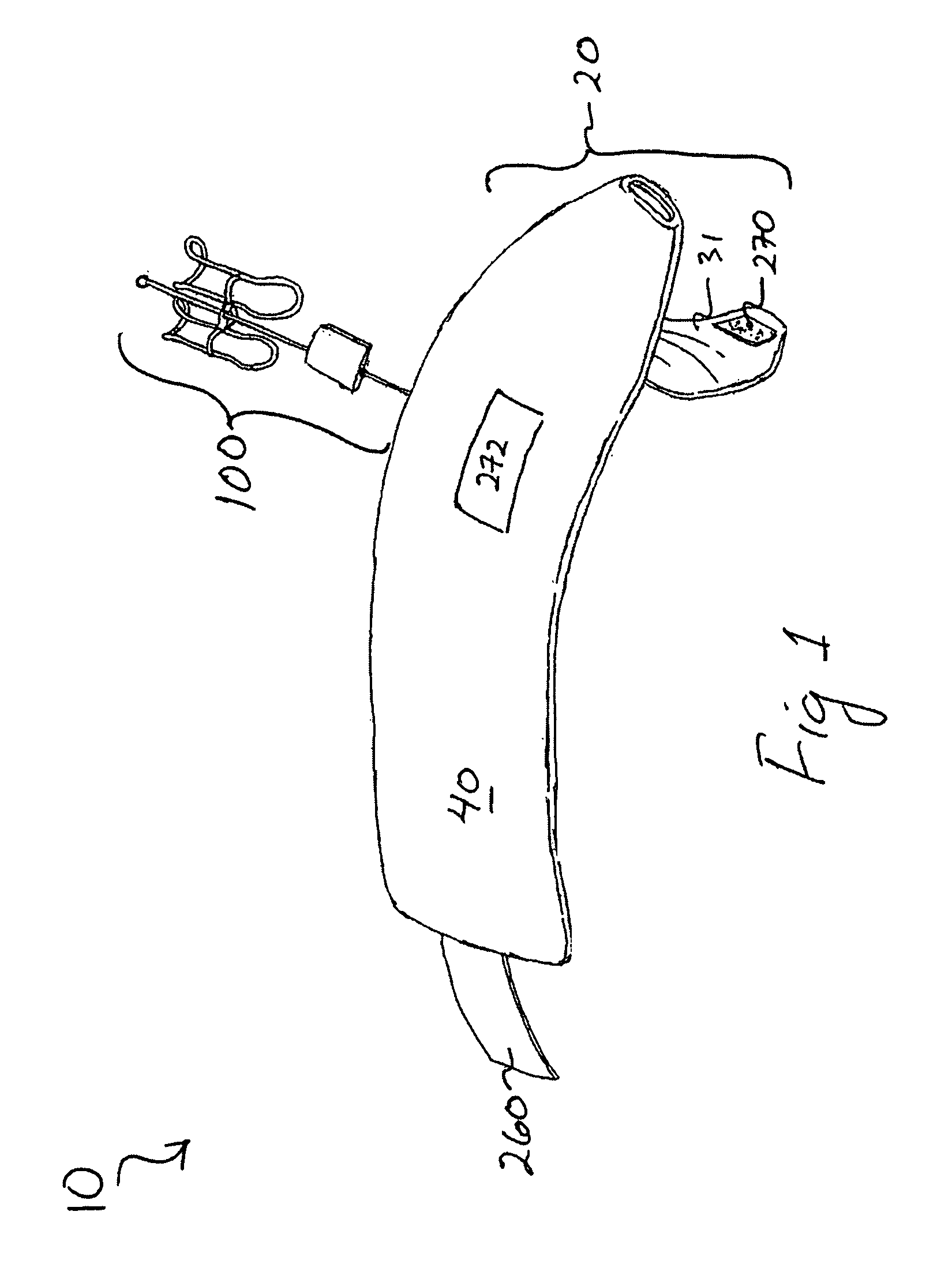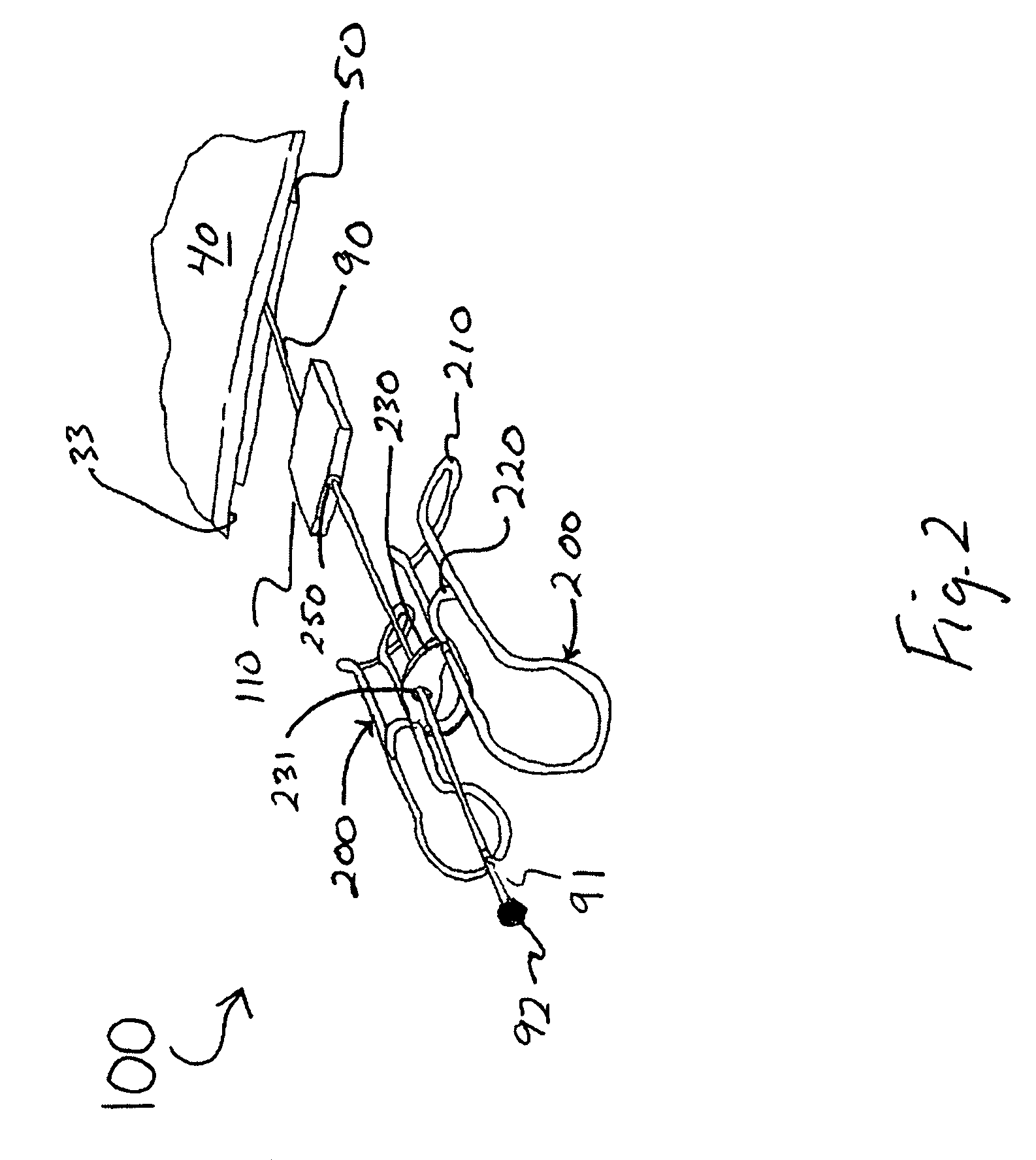Functional low-profile dynamic extension splint and methods for its use and manufacture
a dynamic extension splint, low-profile technology, applied in the field of medical devices and methods, can solve the problems of inoperable devices, frequent adjustments, and loose elasticity of rubber bands and springs, and achieve the effects of reducing the cost of devices, low cost, and easy maintenan
- Summary
- Abstract
- Description
- Claims
- Application Information
AI Technical Summary
Benefits of technology
Problems solved by technology
Method used
Image
Examples
Embodiment Construction
[0030]Referring now to the figures, wherein like elements are numbered alike throughout, an exemplary low-profile dynamic extension splint in accordance with the present invention, generally designated “10”, is provided, FIG. 1. The dynamic extension splint 10 may comprise a glove 20 and an extension assembly 100 which provide an extension force to bias an individual's fingers and thumb in an open position, which may be particularly helpful to individuals who suffer from flexor spasticity which prevents the normal extension of the fingers through the DIP (distal interphalangeal) and PIP (proximal interphalangeal) joints, FIG. 17. In addition, the dynamic extension splint 10 is sufficiently flexible to allow the individual to bend one or more of their fingers at the knuckle towards the thumb to permit a grip, such as tripod grip, to be formed between the fingers and the thumb, FIG. 18.
[0031]Returning to FIG. 1, the splint 10 may include various types of structures for covering and su...
PUM
 Login to view more
Login to view more Abstract
Description
Claims
Application Information
 Login to view more
Login to view more - R&D Engineer
- R&D Manager
- IP Professional
- Industry Leading Data Capabilities
- Powerful AI technology
- Patent DNA Extraction
Browse by: Latest US Patents, China's latest patents, Technical Efficacy Thesaurus, Application Domain, Technology Topic.
© 2024 PatSnap. All rights reserved.Legal|Privacy policy|Modern Slavery Act Transparency Statement|Sitemap



